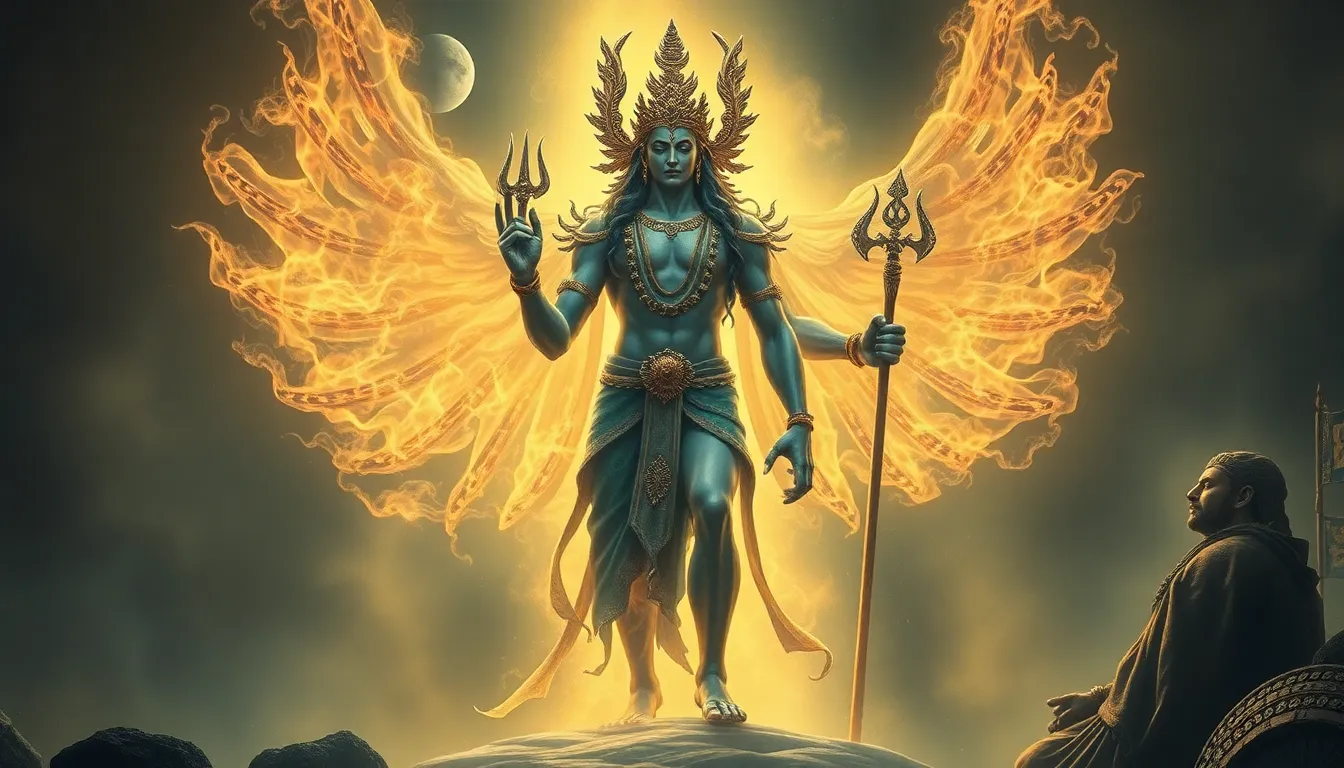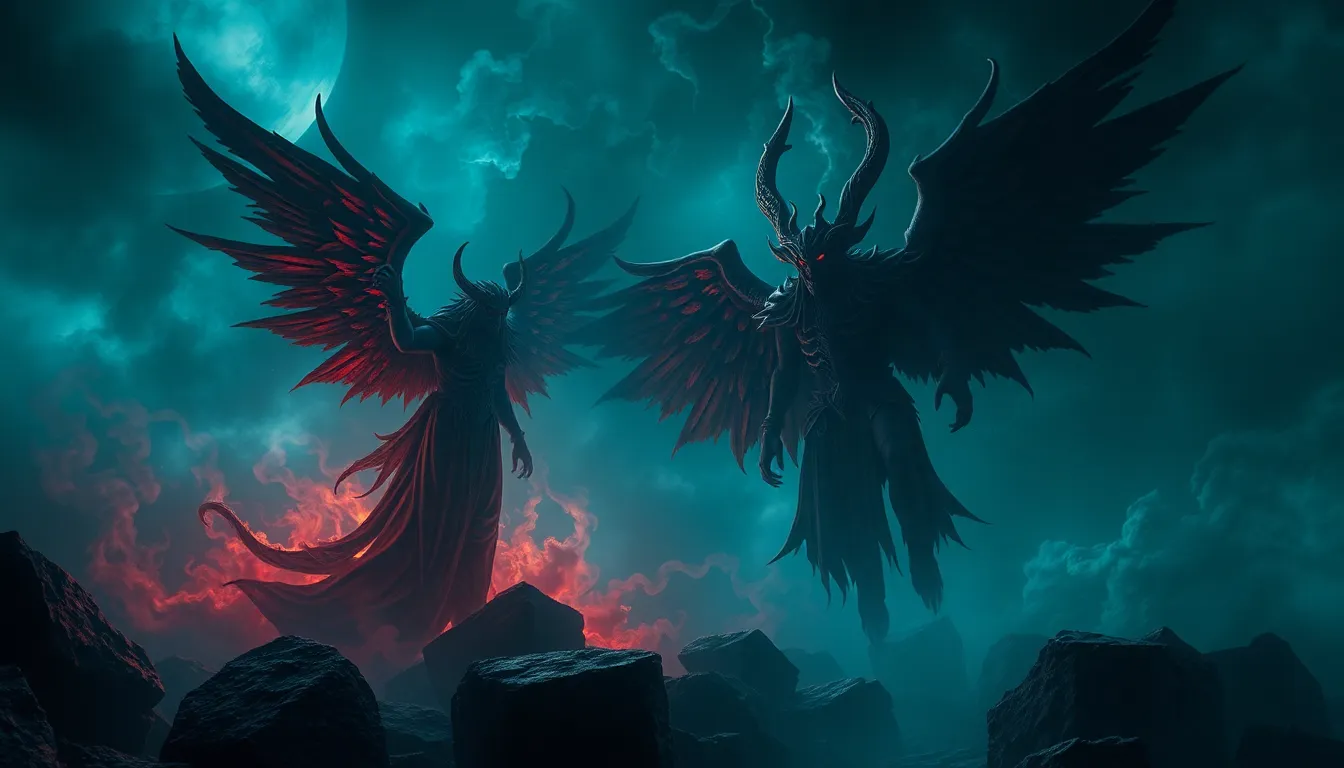The Most Powerful Ancient Deities and Their Legendary Stories
I. Introduction
Ancient deities have played a pivotal role in shaping the beliefs, values, and cultures of societies throughout history. These powerful beings, revered across various civilizations, embody the forces of nature, morality, and human experience. From the pantheon of Greek gods to the revered deities of Hinduism, these figures are not only central to mythology but also serve as reflections of the societies that worshipped them. This article aims to explore some of the most powerful ancient deities and their legendary tales, highlighting their significance and enduring legacy.
II. The Pantheon of Power: Criteria for Selection
When considering the most powerful ancient deities, several criteria come into play:
- Attributes of Power: These deities often possess extraordinary abilities, such as control over natural elements, the power of creation, or dominion over life and death.
- Influence on Civilizations: Many deities played crucial roles in the development of cultural, religious, and social norms within their respective societies.
- Longevity and Reverence: The most revered deities have stood the test of time, remaining central figures in historical narratives and religious practices.
III. Zeus: The King of the Greek Gods
Zeus, the king of the Greek gods, is one of the most powerful figures in ancient mythology. As the god of the sky and thunder, he held dominion over Mount Olympus and was regarded as the protector of gods and men.
A. Origins and Family Lineage
Zeus was the youngest son of the Titans Cronus and Rhea. To prevent a prophecy that one of his children would overthrow him, Cronus swallowed his offspring. However, Rhea saved Zeus by hiding him in a cave and giving Cronus a stone wrapped in swaddling clothes. When Zeus grew older, he forced Cronus to regurgitate his siblings and led a revolt against the Titans, known as the Titanomachy.
B. Major Myths and Legendary Tales
Zeus’s life is filled with numerous myths, including:
- Titanomachy: The epic battle where Zeus and his siblings defeated the Titans, establishing the rule of the Olympian gods.
- Prometheus: The story of Prometheus stealing fire for humanity, resulting in Zeus punishing him by sending an eagle to eat his liver daily.
C. Cultural Impact and Legacy
Zeus’s influence extends beyond mythology, impacting art, literature, and modern culture. He is often portrayed in sculptures and paintings as a majestic figure, symbolizing authority and justice.
IV. Odin: The Allfather of Norse Mythology
Odin, known as the Allfather, is a central figure in Norse mythology. He is associated with wisdom, war, and death, and is a complex character with many facets.
A. Characteristics and Domains of Odin
Odin is depicted as a one-eyed god who sacrificed his eye for wisdom. He is the god of poetry, knowledge, and war, often seeking out knowledge through sacrifice and cleverness.
B. Key Stories
Some notable tales include:
- The Quest for Knowledge: Odin’s relentless pursuit of wisdom led him to the Well of Mimir, where he sacrificed his eye.
- Ragnarok: Odin plays a crucial role in the events of Ragnarok, the prophesied apocalypse in Norse mythology.
C. Odin’s Role in Shaping Norse Culture
Odin’s impact on Norse culture is profound, influencing their views on bravery, death, and the afterlife. He is often associated with the Viking Age and the warrior ethos.
V. Ra: The Egyptian Sun God
Ra is one of the most important deities in ancient Egyptian religion, representing the sun and creation. He was believed to travel across the sky daily, bringing light and life to the world.
A. Significance of Ra in Ancient Egyptian Religion
Ra was often depicted as a falcon-headed god with a sun disk above his head, symbolizing his role as the giver of life.
B. Legendary Stories
Key stories associated with Ra include:
- The Daily Journey: Ra’s journey across the sky in his solar boat, which represented the cycle of day and night.
- Battles Against Apophis: Ra’s nightly battles against the serpent god Apophis, representing chaos and darkness.
C. Ra’s Influence on Pharaohs and Egyptian Society
Pharaohs were often considered the earthly embodiment of Ra, and their reigns were legitimized through their connection to him. Ra’s worship influenced many aspects of Egyptian society, including architecture and art.
VI. Vishnu: The Preserver in Hinduism
Vishnu is a principal deity in Hinduism, known as the Preserver within the Trimurti, which includes Brahma the Creator and Shiva the Destroyer.
A. The Concept of Vishnu within the Hindu Trimurti
Vishnu’s role as the Preserver emphasizes his responsibility to maintain cosmic order (dharma) and protect humanity.
B. Major Incarnations and Their Legendary Narratives
Vishnu is known for his ten avatars, known as the Dashavatara, which include:
- Rama: The hero of the Ramayana, known for his virtue and devotion.
- Krishna: A central figure in the Mahabharata, known for his wisdom and playful nature.
C. Impact on Hindu Philosophy and Practice
Vishnu’s teachings and stories have deeply influenced Hindu philosophy, rituals, and cultural practices, promoting values such as devotion and righteousness.
VII. Quetzalcoatl: The Feathered Serpent of Mesoamerica
Quetzalcoatl, known as the Feathered Serpent, is a significant deity in Mesoamerican cultures, particularly among the Aztecs.
A. Description and Symbolism of Quetzalcoatl
Quetzalcoatl symbolizes a blend of the earthly and the divine, often associated with wind, air, and learning.
B. Myths Associated with Quetzalcoatl
Some prominent myths include:
- Creation Myths: Quetzalcoatl’s role in the creation of humanity and the world.
- The Fall from Grace: His eventual departure from the earthly realm, which led to various interpretations about his return.
C. Cultural Significance Among the Aztecs
Quetzalcoatl was revered as a god of wind and rain, associated with agriculture and the arts. His teachings influenced Aztec society and culture significantly.
VIII. Anubis: The Guardian of the Underworld
Anubis, the jackal-headed god of ancient Egypt, is primarily known for his role in funerary practices and the afterlife.
A. Anubis’s Role in Ancient Egyptian Funerary Practices
Anubis was believed to oversee the mummification process and guide souls to the afterlife, ensuring their safe passage.
B. Legendary Stories and Myths Surrounding Anubis
He is often involved in stories about Osiris and the judgment of the dead, where he weighs the hearts of the deceased against the feather of Ma’at.
C. Anubis’s Representation in Modern Culture and Media
Anubis has become a symbol of ancient Egypt in modern media, appearing in films, literature, and various forms of art, representing mystery and the afterlife.
IX. The Legacy of Ancient Deities in Modern Times
These ancient deities continue to influence contemporary beliefs and practices. Their stories are retold in literature, films, and art, showcasing their relevance in today’s world.
A. Influence on Contemporary Beliefs and Practices
The archetypes and narratives surrounding these deities resonate with modern themes of morality, power, and the human experience.
B. Representation in Popular Culture
Many films, books, and artworks draw inspiration from ancient myths, such as:
-
<li



